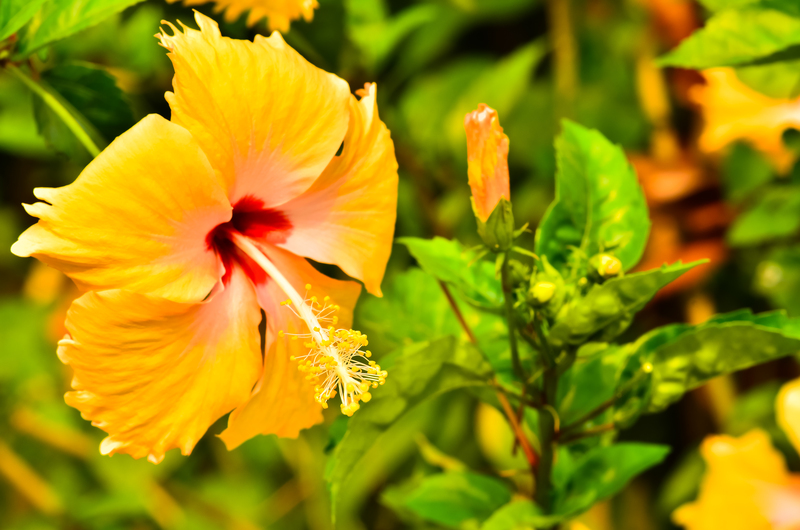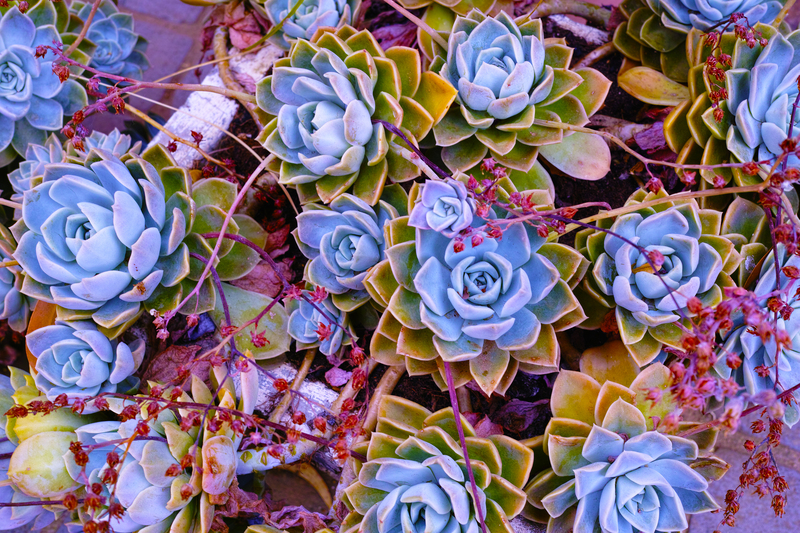Create a Garden that Blossoms Kids' Creativity
Posted on 18/08/2025
Create a Garden that Blossoms Kids' Creativity: Inspiring Young Minds Through Nature
Imagine a world where children's minds bloom as vibrantly as the flowers in a spring meadow. This world is within reach when you create a garden that blossoms kids' creativity, right in your own backyard or community space. A kids' creativity garden is more than a place for plants to grow; it's a living classroom, an outdoor art studio, and a boundless adventure zone that nurtures wonder, problem-solving, and innovation.
Why a Creative Garden is Essential for Kids
Childhood is a time of exploration, and nature is the perfect playground. A creativity-centered garden provides children with:
- Hands-on learning experiences that go beyond traditional classrooms
- Multisensory stimulation for smells, sights, textures, and tastes
- Opportunities to experiment, invent, and express themselves through art, play, and observation
- A soothing environment that boosts concentration, happiness, and reduces stress
- Real-life lessons about science, sustainability, and caring for the earth
Creating a garden that nurtures children's creative spirits sets the stage for lifelong curiosity and a love of learning. Let's dig into how you can cultivate a vibrant, kid-focused creative garden space.

Planning Your Kids' Creativity Garden: Start with Imagination
Involve Children in the Vision
Before you plant even a single seed, gather your young gardeners! Include children in the brainstorming process. Ask:
- What colors do you want in our garden?
- What spaces would you like to play, sit, or explore?
- Which edible plants or flowers appeal to you?
- Are there any themes or favorite creatures you want to see (e.g., butterfly, fairy, dinosaur)?
By inviting kids into the planning phase, they'll feel invested and inspired to tend to their creative corner of the world.
Selecting the Perfect Spot
Choose an area that offers a mix of sun and shade for diverse plant choices, easy access for children, and space for garden art, seating, or play structures. Safety comes first--make sure the area is free from dangerous debris, has secure fencing if young children are involved, and ready for hands-on muddy fun!
Designing a Garden that Sparks Kids' Creativity
1. Themed Creative Garden Zones
Break up your garden into zones that each serve a different creative purpose. Examples include:
- Art Corner: An area with easels, watercolors, natural pigments, or clay for artistic expression.
- Imagination Grove: A mini-forest with tunnels, willow domes, or teepees for role-play, storytelling, and pretend play.
- Music Meadow: Install wind chimes, wooden xylophones, or create instruments from recycled garden materials.
- Sensory Bed: Grow aromatic herbs like mint and lavender, plus plants with various textures like lamb's ear and ornamental grasses.
- Edible Patch: A kids' creativity garden with vegetables, berries, and edible flowers for snacking, cooking, and learning about nutrition.
Rotate activities regularly to keep kids engaged and curious!
2. Child-Friendly Plant Choices
When selecting plants, aim for variety, safety, and hands-on features. Some top picks include:
- Sunflowers and nasturtiums: Fast-growing, cheerful, and edible
- Snapdragons and lamb's ear: Irresistible to touch
- Strawberries and bush beans: Rewarding to harvest and eat
- Milkweed and butterfly bush: Attracts pollinators for nature observation
- Herbs like mint, basil, and lemon balm: Delightfully fragrant and easy to grow
Mix in a few "mystery" plants each year to nurture a sense of anticipation and discovery!
3. Integrate Natural and Recycled Materials
Add to the creative magic by including:
- Stepping stones, mosaics, or painted rocks
- Water features like shallow birdbaths for sensory play
- Hollow logs, stumps, and tree cookies as unusual seats or balance beams
- Build bug hotels or fairy houses from twigs, leaves, and found objects
Not only do these elements make your creative garden more fun, but they also reinforce values of sustainability and upcycling!
Gardening Activities to Fuel Kids' Creativity Year-Round
Spring: Planting the Seeds of Imagination
- Seed Art: Arrange seeds and beans in patterns on soil before gently pressing them in.
- Nature Journaling: Sketch the shapes of leaves, flowers, bugs, or changes as the garden grows.
- Story Stones: Paint designs or characters on stones, then use them to create and retell tales in the garden.
Summer: Tending and Transforming
- Garden Picnics: Harvest snacks and set up a magical picnic with homemade flower crowns.
- Insect Expeditions: Hunt (and gently observe) butterflies, bees, and beetles. Craft bug catchers or build bug hotels.
- Water Play: Use watering cans, sprinklers, or buckets for sensory fun that keeps plants refreshed.
Autumn: Celebrating the Harvest
- Leaf Collage Art: Collect fallen leaves and seeds to create mosaics or mandalas.
- Pumpkin and Gourd Decorating: Paint, carve, or dress up home-grown pumpkins and gourds.
- Seed Saving: Teach children to harvest and store seeds for the next season, closing the creative loop.
Winter: Imagination Indoors
- Miniature Indoor Gardens: Start microgreens by the window and design tiny fairy gardens in pots.
- Crafting with Nature's Finds: Pinecones, dried flower heads, and twigs become the basis for eco-friendly art projects.
- Garden Planning: Dream together about what new creative projects and plantings to explore once spring arrives again.
Encouraging Self-Expression and Problem-Solving in the Garden
Every moment in a kids' creativity garden is a chance to nurture individuality and imagination. Here are ways to gently guide, without taking over, so creativity truly blossoms:
- Ask open-ended questions: "What do you think this bug is doing?" or "How could we make this plant even happier?"
- Celebrate mistakes as discoveries: If a plant doesn't thrive, talk about what it teaches us.
- Provide just enough tools and structure: Lay out basic materials, then let children invent their own ways to build, create, or play.
- Encourage storytelling, poetry, and song: Use the garden setting as inspiration for literary and performing arts.
- Support teamwork and sharing: Create garden club projects or treasure hunts that foster collaboration.
Including All Abilities in the Creative Garden
A truly inclusive kids' creativity garden makes sure every child can participate and thrive. Some tips include:
- Use raised beds or wide paths for wheelchair access.
- Offer varied heights and textures for sensory-friendly experiences.
- Consider quiet nooks or small shelters for children who need a calming space.
- Label plants with large, bold tags and pictures for early readers and non-readers.
Remember, the goal is to make creativity accessible for all: let every child's imagination truly blossom!
Long-Term Benefits of a Kids' Creativity Garden
By integrating a creative garden into your child's life, you're planting more than just seeds; you're nurturing cognitive growth, emotional well-being, and essential life skills. Children who participate regularly in gardening and outdoor creative activities often demonstrate:
- Greater attention spans and improved focus
- Resilience and willingness to persevere through challenges
- Empathy and stewardship for the environment and living things
- Enhanced motor skills through hands-on, physical activities
- Outstanding communication and teamwork abilities from collaborative projects
- Reduced anxiety and increased happiness
Extending Creativity Beyond the Garden
Encourage children to bring creative projects inspired by the garden into other aspects of life:
- Art classes fueled by natural dyes and pressed flowers
- Story time under a homemade garden teepee
- Cooking simple meals with garden produce
- Science experiments with seed germination and life cycles

Tips for Busy Parents and Teachers to Maintain Creative Garden Spaces
- Start Small: Even a single raised bed or a few pots can spark big creative ideas.
- Rotate Activities: Swap out art materials, change up play structures, or try new recipes to renew interest.
- Involve the Community: Organize garden days, bring in guest artists, or host themed workshops.
- Make it Messy: Encourage "dirty hands"; creativity blossoms best with freedom to explore.
- Celebrate Successes: Hold seasonal garden parties or show-and-tell events, where children can share their creative garden achievements.
Conclusion: The Most Beautiful Bloom is a Creative Child
To create a garden that blossoms kids' creativity is to sow the seeds of imagination, resilience, and joy. More than just a play space, a kids' creativity garden is the perfect fusion of art, science, and nature--a laboratory for growing minds. Whether with a windowbox or a large backyard, parents and educators can transform any outdoor space into a place where children blossom alongside their plants.
Remember, the most remarkable things you'll harvest aren't just flowers or vegetables--they're the creative sparks, innovations, and smiles of the children exploring your magical, living classroom.
Start your creative garden today, and watch the wonder grow.

